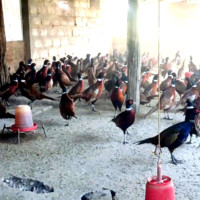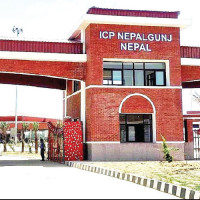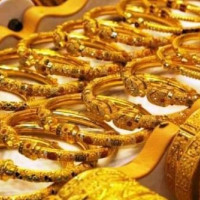- Monday, 29 December 2025
Pher System: Dolakha's Agricultural Practice
Dolakha town holds a significant place in Nepal's history and is recognised as a historical center. According to historians Tek Bahadur Shrestha and Dhan Bajra Bajracharya, Dolakha was the capital of an independent nation for a century ("Dolakha Ko Yatihasik Ruprekha"). Originally a trade-centric settlement, Dolakha evolved into a thriving 'Pattan' and 'Mahapattan' (town), marking an era of economic prosperity. During this period, the town flourished with the construction of temples, grand buildings, stone-cobbled streets, taps, ponds, and mandaps, reflecting its cultural and architectural advancements.
Notably, Dolakha gained renown for its silver coin minting, led by Indrasinghdev, which distinguished it as a hub of wealth. The town's prosperity was so pronounced that its rulers proudly referred to it as 'the settlement of the rich'. This period also saw the introduction of collective farming practices for paddy cultivation, further enhancing Dolakha's agricultural landscape.
The paddy fields of Dolakha on the banks of the Tamakoshi River are very fertile. However, till today, traditional farming is continuing, and no efforts have been made to introduce new techniques. In the mediaeval period, agriculture was the main occupation and main source of most of the people of Dolakha, which is continuing today. There was a tradition of collective farming in paddy plantations known as the “Pher System,” which is still continuing. By initiating the Pher system of farming, the then rulers seem to have tried to attain self-sufficiency in food, particularly rice, by ensuring that no one’s land was left without cultivation. This article attempts to shed light on the various aspects of the Pher system.
On the day of Chaitra Shukla Purnima, the priest of Tripura Sundari, on behalf of all the people of Dolakha, invokes Gangaji, praying for smooth farming without any disturbance. Samples of all kinds of seeds used in cultivation are collected from every house and flown into the Tamakoshi River. A goat is also sacrificed on that occasion, which is known as “Khow Puja (river worship).
The preparation for rice plantations is made on the next day of the 'Sithi Nakhat' (Jyeshtha Shukla Shashti) festival. A committee of farmers is constituted in every village of the town to organise paddy plantations, which is called "Pher,” meaning turn by turn. A Naike (leader) is selected on consensus from among themselves to carry out the functions of Pher, but the Naike should be a smart, experienced, and strong man. The responsibility of providing overall supervision of plantations completely falls on the Naike. He makes divisions of labour among the Pher members according to their expertise and experience. The formality of selecting a Naike is completed by providing Sagun, consisting of a boiled egg and wine, to the Naike selected. He also performs some important work on the plantation. In case they feel the dearth of some implements or seedlings, Naike takes prompt action to repair or borrow tools or seedlings from others.
The Naike, who leads the Pher, and Suril, who carries foodstuffs and drinks like ‘Thown’ (Jaad) to the workers in 'Suri' (Thunse) from the landowner, are indispensable parts of the Pher. The Suril, who must be an honest person, is nominated by the Naike, feeds ‘Thown” to the workers at least three times a day, and occasionally distributes cigarettes and Bidi to refresh them.
While Naike has a moral responsibility to do things properly, other Pher members need to respect and obey him. The Naike, in consultation with other Pher members, prepares the plantation schedule to plant paddy on the fields of the members, turn by turn. On the morning of each plantation day, the landowner needs to send the items of the feast, including a boiled egg, to the Naike as a sign of honor. After Pher is formed, the agricultural tools and implements, including bullocks, to till the land, including their labour, are pooled together by the members. At least two pairs of bullocks are necessary for ploughing. A pair of bullocks is used for tilling the land, called “Sa Waya," and another pair is used for smoothing the tilled land, which is called “Milsa Waya” in the local language.
However, the function of the Pher is limited to tilling and ploughing the field. The members of Pher, by digging and ploughing, prepare the fields, whereas the real act of planting paddy seedlings is done by womenfolk. The women of a household arrange the required number of rice planter women by exchanging labour with either the women of their tole or other tole on the basis of labour exchange, which is called ‘Latakhai" in the local language. The men are prohibited from indulging in paddy plantations. Only in case the women cannot finish the plantation within the stipulated time of the day may the Pher members help them, but only by taking a certain amount of money from the landowner.
After finishing the plantation, there is a practice of eating a kind of feast consisting of beaten rice with different types of vegetables and pickles. The specialty of this feast is that an item called “Mwartuli” in the local language (soybean sprout) is compulsory. The workers, including the planters, should be given beaten rice in a stipulated quantity.
On the day of the plantation, relatives are invited to feed boiled rice; they, in turn, contribute voluntary labour to help in the plantation by doing light work and distributing chocolates and cigarettes on their own to all the workers, including planter women.
The family who cannot join Pher due to their inability to work or contribute labour, bullocks, or implements can purchase Pher for plantation. The Naike charges a fee for this based on the size of the fields and the quantity of work to be done. However, the purchaser of Pher will have to provide the necessary foods and drinks. The amount collected as a fee by selling the Pher and fines is spent on eating feasts after the plantation works are done.
The Pher system not only enables farmers to cultivate their land with ease during the busy plantation season but also helps to cultivate a sense of social unity and compassion among the local people. In fine, it can be concluded that the Pher system is a best practice worth imitating in a society overly dependent on agriculture. To conclude, in the words of Dr. Prem Khatri, a cultural expert, “Due to the 'Pher-system' introduced by the people of Dolakha town since ancient times, paddy planting in Dolakha not only becomes fun but also a lot of work is done quickly and efficiently.”
(The writer is an expert on Nepali culture.)















-original-thumb.jpg)
